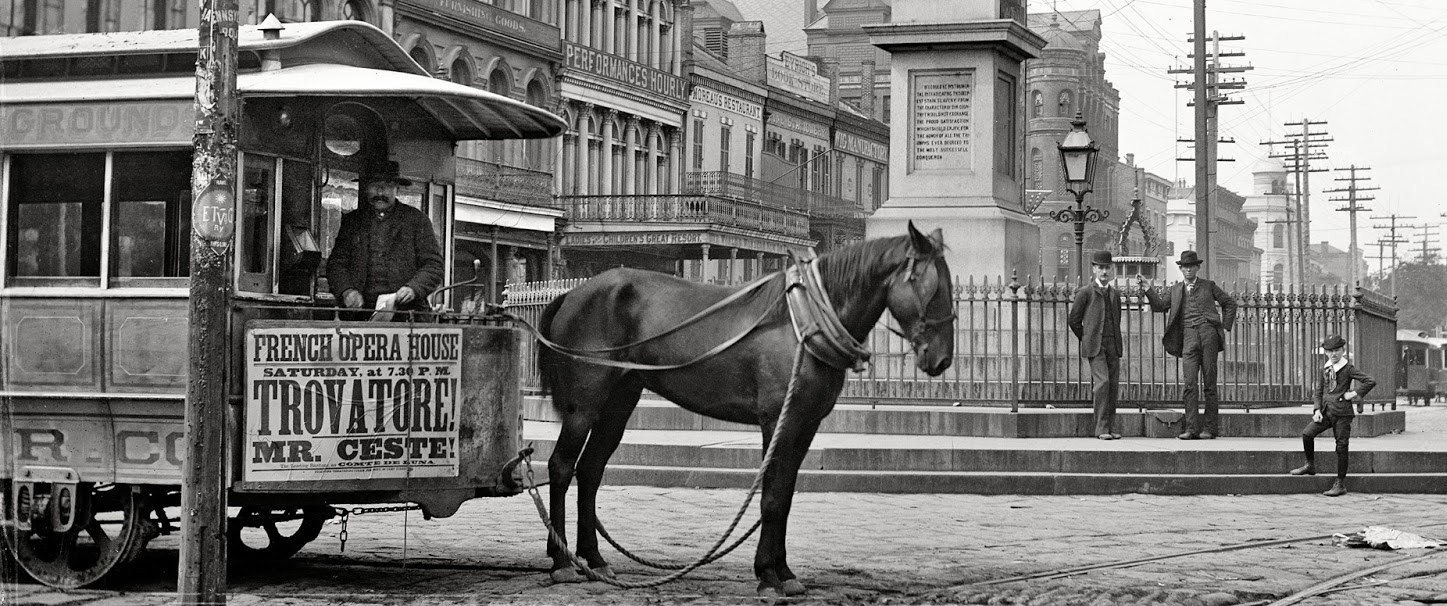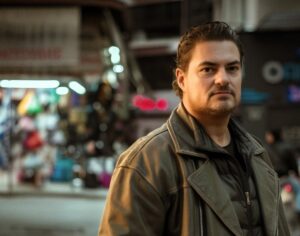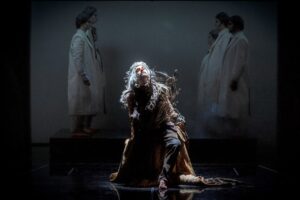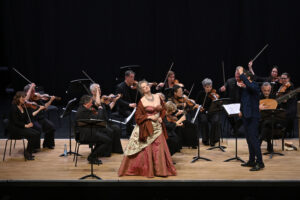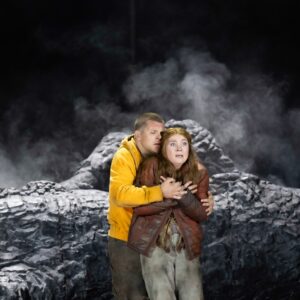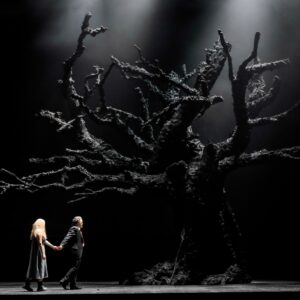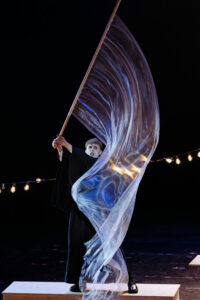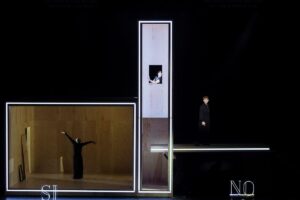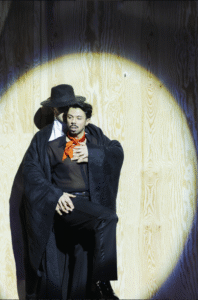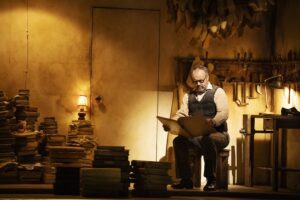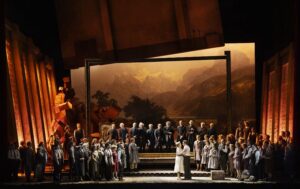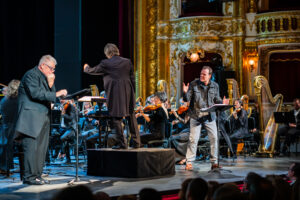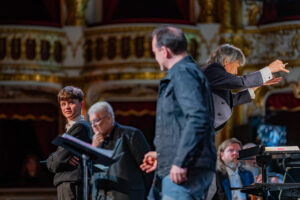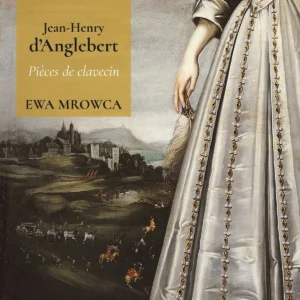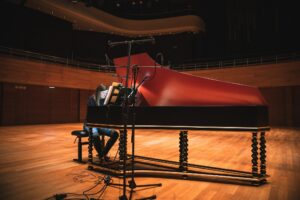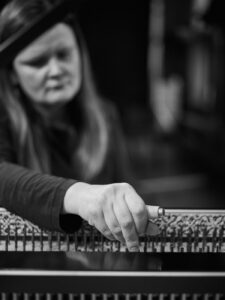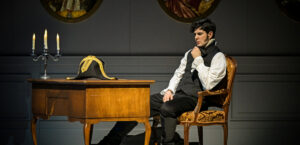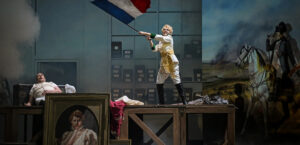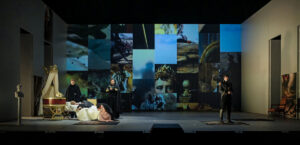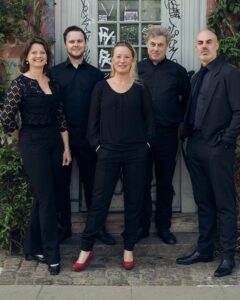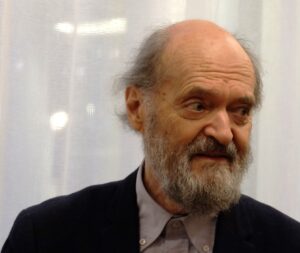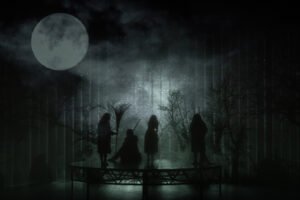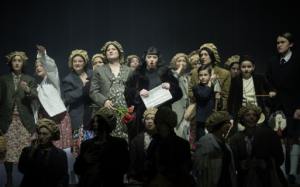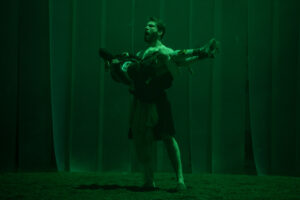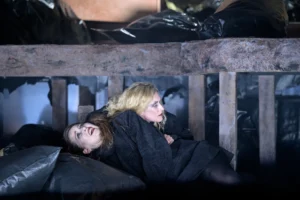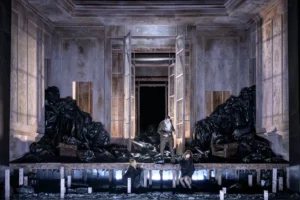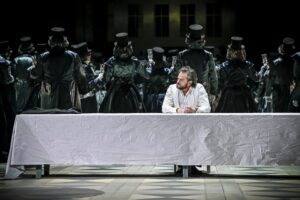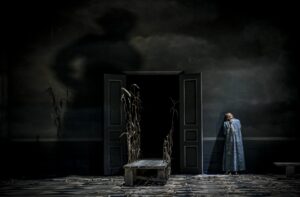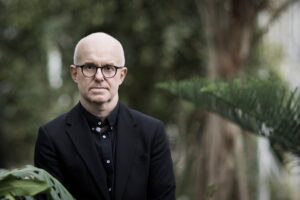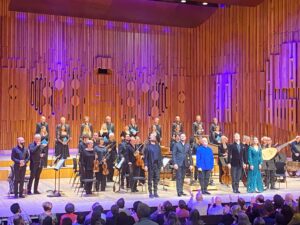Thorns and Laurels
The motto of this year’s Händel-Festspiele Göttingen was “Lorbeeren” or laurels. For thousands of years laurel wreaths have adorned the temples of not only victorious commanders, but also poets, scholars and artists. Laurel is an attribute of Apollo, the god of beauty, life and light. Yet the price of splendour and glory is often suffering: Apollo is also the god of truth and violent death. The dark side of many a triumph was pointed out by George Petrou, the festival’s artistic director, who referred to an aphorism by Otto Julius Bierbaum, a German poet, journalist and author of children’s books. “Lorbeer ist ein gutes Kraut für die Saucenköche”: laurel is a herb good for sauciers. Yet when worn on the head, it can sting.
That is why the Festpspiele poster features a green laurel branch with a black chain spiralling under it. That is why Petrou’s choice of the festival opera this time was Tamerlano, one of Handel’s darkest and most remarkable stage works – a masterpiece that was underrated at first, then long forgotten and resurrected only on the bicentennial of its premiere, in 1924, at Karlsruhe’s Hoftheater. In Göttingen Tamerlano was first heard on period instruments exactly forty years ago, in the middle of John Eliot Gardiner’s tenure.
The opera was apparently written in less than three weeks, between Giulio Cesare and Rodelinda, for the Royal Academy of Music’s sixth season at the Haymarket theatre. In some respects it can be viewed as an attempt to jump on the bandwagon of Orientalism, fashionable in Britain at the time, as well as a nod to the Academy’s wealthiest benefactors, who were associated with the East India Company – soon to become the main driving force of British imperial power. On the other hand, however, Tamerlano seems to be a sentimental journey to the Italy of the composer’s youth. This may explain the self-quotations from Il trionfo del tempo e del disinganno and La Resurrezione present in the score, and, above all, the idea of entrusting the key role of Bajazet to a tenor voice – first used by Alessandro Scarlatti in Il gran Tamerlano of 1706, and then in several versions of Francesco Gasparini’s opera.
George Petrou. Photo: FreddieF
In 1724, when Handel’s opera was premiered, Londoners were already accustomed to the November tradition of staging Nicholas Rowe’s tragedy Tamerlane on William of Orange’s birthday and the anniversary of the bloodless revolution that began the following day, shortly after the Dutch prince’s arrival in England in 1688. In Rowe’s play the eponymous Tamerlane, that is the Mongol ruler Timur the Lame, turned out to be an allegory of William himself, an enlightened philosopher king. The villain was Bayezid, the Ottoman sultan captured by Timur after the Battle of Ankara and a personification of King Louis XIV of France, hated by William. This may have been the reason why the audience felt confused by the story being presented in Handel’s opera from a slightly different perspective, with Haym’s libretto drawing on both Scarlatti’s opera and Gasparini’s Tamerlano, whose librettist, Agostino Piovene, in turn relied on Jacques Pradon’s French tragedy. Handel backed this tale of a clash between two barbarian titans with his own musical genius, creating a work astonishing in the psychological depth of its characters – ambiguous, often repulsive, arousing sympathy streaked with grotesque and horror.
The indefatigable Rosetta Cucci – who has been associated with Wexford Festival Opera for years, since 2020 as and the festival’s artistic director, and is also active as an accompanist and stage director – explained in the description of her staging concept for Tamerlano that she intended to move away from historical truth and create a universal drama. A puzzling statement given that all modern directors of Baroque operas do so, not to mention the fact that there was never any historical truth in Tamerlano. Instead, we have the truth of emotions and superbly drawn relationships between the six protagonists in the score, highlighted by an almost classical unity of time and place – the action takes place just after the battle lost by Bajazet, in the palace taken over by his vanquisher in Bursa, then the capital of the Ottoman Empire. Cucci has set the story in a claustrophobic space painted with black and bright white light (set design by Tiziano Santi, costumes by Claudia Pernigotti, lighting by Ernst Schiessl), suspended between a dream, allegory and vision of a quite modern dictatorship. I have seen dozens of similar takes on pre-Romantic opera in my life, most of them over a quarter of a century ago at the old Warsaw Chamber Opera. They were, however, mostly clearer and more closely related to the music – and music, in the case of the drama’s two main protagonists, gives the director more than enough clues as to what to do with them on stage.
Yet Cucci, contrary to the score, sees Tamerlano as a bloodthirsty monster devoid of any human qualities and has turned Bajazet into an archetypal victim. She has made up for the bucolic element missing in the opera by having Asteria wear an idyllic costume and Andronico change at one point his prince’s military uniform for a white robe. She has added to the cast seven mime actors, entrusting them with the role of pricks of Tamerlano’s conscience or perhaps his urges and fantasies, shamefully pushed deep into the subconscious. She has also introduced additional plots (including that of Leone’s rejected courtship of Irene) and a whole host of unnecessary props that, instead of clarifying the complicated narrative, make it even more confusing.
This affected especially the character of Tamerlano, constructed with dedication – in line with the director’s intentions – by Lawrence Zazzo, a fine actor and an even better singer, whose colourful, typically masculine countertenor has already lost some precision and volume, but still retains great power of expression. The key character of Bajazet was rescued – paradoxically – by Juan Sancho’s fiery stage temperament, fully revealed in the aria “Empio, per farti guerra” and the protagonist’s death scene – jagged, swinging between despair, hallucination and calm in the face of the looming end. Yet this magnificent role, which Handel wrote for Francesco Borosini, who had earlier triumphed in Bajazet, another version of Gasparini’s Tamerlano, requires a slightly different type of voice. Borosini had a very extensive range and moved confidently even in the bass tessitura. Sancho had to make up for the lack of volume at the bottom with some excellent acting.
Tamerlano. Juan Sancho as Bajazet. Photo: Alciro Theodoro da Silva
Towering above the rest of the cast in vocal terms was Yuriy Mynenko as Andronico. His countertenor, now fully developed, round at the top and smoothly moving to sonorous, natural tenor notes at the lower end of the range, predisposes him to most of the roles written for Senesino, who had similar assets. Slightly less impressive was Louise Kemény, whose soprano is soft and rich in colours, but no longer fresh enough for the role of Asteria. Dara Savinova was better as Irene, a role she sang with a dark and velvety mezzo-soprano, exceptionally secure intonation-wise. I am not at all surprised that Petrou, following the example of several of his predecessors, reinstated Leone’s aria “Nell’ mondo e nell’ abisso” removed by Handel – even if only for the sake of Sreten Manojlovic and his warm basso cantante, marked by a hint of melancholy, the beauty and technical excellence of which fully justify the slight deviation from the composer’s intentions.
Thus, the unconvincing staging failed to undermine the success of the Göttingen Tamerlano, to which also contributed the FestspielOrchester, led by Petrou with his usual passion, with an unerring sense of the pulse and rhythm of the music, without unnecessarily “smoothing” it at the edges. I suspect that Petrou was just as passionate in conducting the other staple of the festival programme, a Handel oratorio.
I could not make it to this year’s Solomon, but I rushed straight from the train to a gala concert at the Stadthalle, featuring the same orchestra and Ann Hallenberg, the legendary Swedish mezzo-soprano, a pupil of Kerstin Meyer, remembered for her recording of Mahler’s Symphony No. 3 under John Barbirolli. Hallenberg won acclaim mainly in pre-Romantic repertoire, and although she performs less frequently these days, her mature voice has retained all the qualities of her youth: golden colour, excellent breath control and stylish, flowing phrasing. To give the singer some breathers and to highlight her strengths all the more effectively, Petrou put together a programme alternating between Handel’s arias, and Vivaldi’s concertos and sonatas. It was a true greatest hits concert, during which I enjoyed “Venti, turbini, prestate” from Rinaldo as much as the soloists’ excellent collaboration with the conductor and the entire ensemble (special credit should go to the concertmistress Elizabeth Blumenstock and the bassoonist Alexadros Oikonomou).
Galakonzert. Ann Hallenberg, George Petrou and FestspielOrchester Göttingen. Photo: Alciro Theodoro da Silva
There were also, as usual, lectures and symposia, there were events for children, there was a competition for young performers of Baroque music, there was morning music from the tower at St. James’ (played by the carillonist Martin Begemann) and a host of other events, including afternoon recitals in Göttingen churches. I will especially remember the performance by Stefan Kordes, organist at the St. Jacobi parish, who, playing on an instrument from the local workshop of Paul Ott, presented not only works by Bach, Messiaen and Elgar, but also fascinating transcriptions of Wagner’s “O, du mein holder Abendstern” and Ride of the Valkyries by Edwin Lemare, one of the most popular and influential organists of the turn of the twentieth century.
George Petrou attracts new regulars to the Händel Festspiele, using by all possible means. This year he decided to give them a Göttingen version of the Last Night of The Proms, featuring the Jacobikantorei and the Göttinger Symphonieorchester conducted by its head Nicholas Milton. Everything was as it should be: Edward Elgar’s Pomp and Circumstance at the beginning, Hubert Parry’s Jerusalem and Henry Wood’s Fantasia on British Sea Songs at the end, and in between Handel, of course, Londonderry Air as well as many other musical delights. The encores were crowned with the fiery Brazilian rumba Tico-Tico no fubá.
I honestly admit: I sang Land of Hope and Glory, Mother of the Free with everyone else. I clapped to the rhythm of Hornpipe – encouraged by Milton, who conducted the whole thing with a sense of humour and energy worthy of Leonard Bernstein. Difficult times have come. The world is breaking in our hands. To refer once again to Otto Bierbaum’s words: “Humor ist, wenn man trotzdem lacht”. There is nothing else to do but laugh in spite of the difficulties.
Translated by: Anna Kijak
